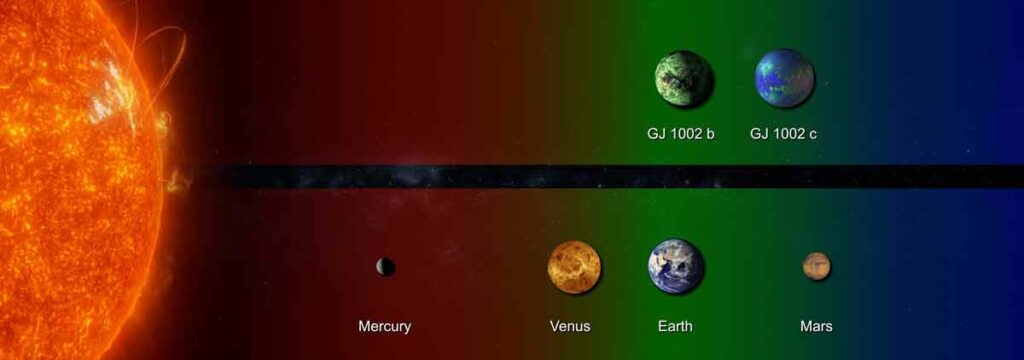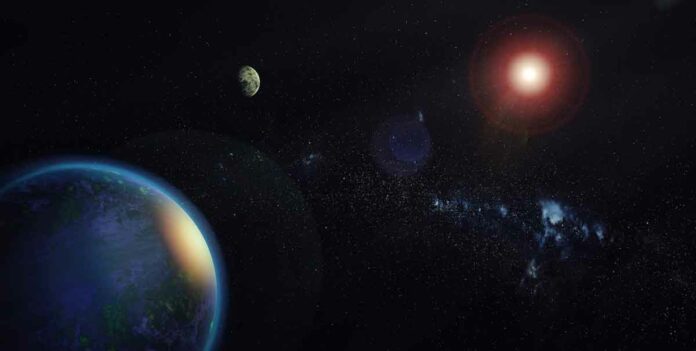An international scientific team led by researchers from the Instituto de Astrofisica de Canarias (IAC) discovered two planets. These planets have Earth-like masses in orbit around the star GJ 1002. GJ 1002 is a red dwarf not far from our solar system. Both planets are in the habitability zone of the star.
“Nature appears to be determined to demonstrate that Earth-like planets are extremely common. We now have 7 in planetary systems very close to the sun “said Alejandro Suárez Mascareo, an IAC researcher and first author of the study. The study is accepted for publication in Astronomy & Astrophysics.
The newly discovered planets orbit the star GJ 1002. It is only about 16 lightyears away from the solar system. They both have masses comparable to Earth and are in the habitable zone of their star. GJ 1002b is the smaller of the two. It takes just over 10 days to complete an orbit around the star. But GJ 1002c takes slightly more than 21 days.
The proximity of the star to our solar system implies that the two planets are excellent candidates for the characterization of their atmospheres based either on their reflected light or on their thermal emission.

The discovery was made during a collaboration between the ESPRESSO and CARMENES instrument consortia. CARMENES observed GJ 1002 between 2017 and 2019 and ESPRESSO observed it between 2019 and 2021.
CARMENES has superior sensitivity over a wide range of near-infrared wavelengths to other spectrographs aimed at detecting variations in star velocities. It allowed scientists to study GJ 1002 from the 3.5m telescope at Calar Alto.
The combination of ESPRESSO and the light-gathering power of ESO’s VLT 8m telescopes allowed measurements to be made with an accuracy of only 30 cm/sec.
“If either of the two groups had attempted this work on their own, they would have encountered numerous difficulties. We’ve gotten a lot further together than we would have gotten separately “Suárez Mascareo explains.
More information: A. Suárez Mascareño et al, Two temperate Earth-mass planets orbiting the nearby star GJ 1002, Astronomy & Astrophysics (2022). DOI: 10.1051/0004-6361/202244991

